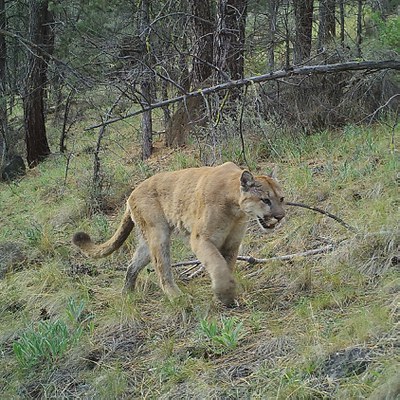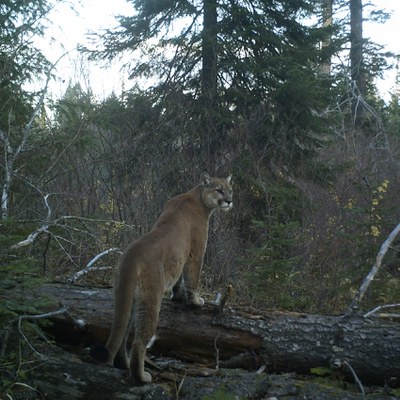Known by many names—puma, mountain lion, ghost cat, or cougar—these large cats might just be one of the most misunderstood predators in North America. It feels like the only time we hear about these creatures is when there’s been an unfortunate cougar-human encounter. Let’s demystify this stealthy predator and learn how we can safely cohabitate with one another.

Historically, several species of cougars were found across almost all of North and South America. Throughout the 1800s and 1900s, cougars were systematically eradicated from the landscape, as they often posed a threat to livestock and people’s livelihood. By the mid 1900s, cougars had almost been hunted to extinction. Recent conservation efforts have helped restore cougar populations, but it’s nothing close to their historical presence.
Efforts to restore cougar populations have been shown to positively affect entire ecosystems. Cougars help regulate deer and other herbivore populations. Without these predators to keep grazers in check, animals such as deer and elk can overgraze, causing less plant biodiversity and issues with erosion along streams and rivers. We can thank cougars for helping create healthy habitats!
Cougars are recognized by their long slender bodies, extremely long tails, and uniform reddish brown fur coloring. Their preferred prey include large hoofed animals such as deer and antelope; however, they have been known to eat all sorts of smaller mammals, including raccoons and even porcupines! Male cougars can weigh anywhere from 115-200 pounds while female cougars tend to weigh anywhere between 64-141 pounds. Unlike some other mammals, cougars do breed year round. Their litter sizes can range from one to six cubs. These cubs stay with their mother for over a year before separating and finding territory and mates of their own.

Oregon is home to over 6,000 cougars whose territories range from the Southern Cascades to the Blue Mountains in the northeastern part of the state. They require large areas of territory for hunting and are mainly active around dawn and dusk, which is why you may never see a cougar face-to-face. While cougars are usually not interested in interacting with humans, they are opportunistic predators as well as highly territorial. It’s important to be aware and prepared when recreating in cougar territory (which includes Central Oregon!).
A few helpful tips to stay safe:
- Do not approach the cougar.
- Do not run or bend over.
- Make yourself appear large and intimidating.
- Face the cougar and back away slowly. Do not turn your back to them.
- Avoid solo activities in cougar territory during dawn and dusk.
There are so many mammals that we share not only Central Oregon, but also our Preserves with. Care and conservation of lands includes care and conservation of wildlife as well. And while cougars can be intimidating animals to encounter in the wild, it’s important to understand the vital role they play in our ecosystems.
Sources:
Learn more about wildlife in Central Oregon:


